Removal Procedure
Caution: Refer to Brake Dust Caution in the Preface section.
- Inspect the fluid level in the brake master cylinder reservoir.
- If the brake fluid level is midway between the maximum-full point and the minimum allowable level, then no brake fluid needs to be removed from the reservoir before proceeding. If the brake fluid level is higher than midway between the maximum-full
point and the minimum allowable level, then remove brake fluid to the midway point before proceeding.
- Raise and support the vehicle. Refer to
Lifting and Jacking the Vehicle
.
- Remove the tire and wheel. Refer to
Tire and Wheel Removal and Installation
.
- Install two wheel nuts in order to secure the rotor.
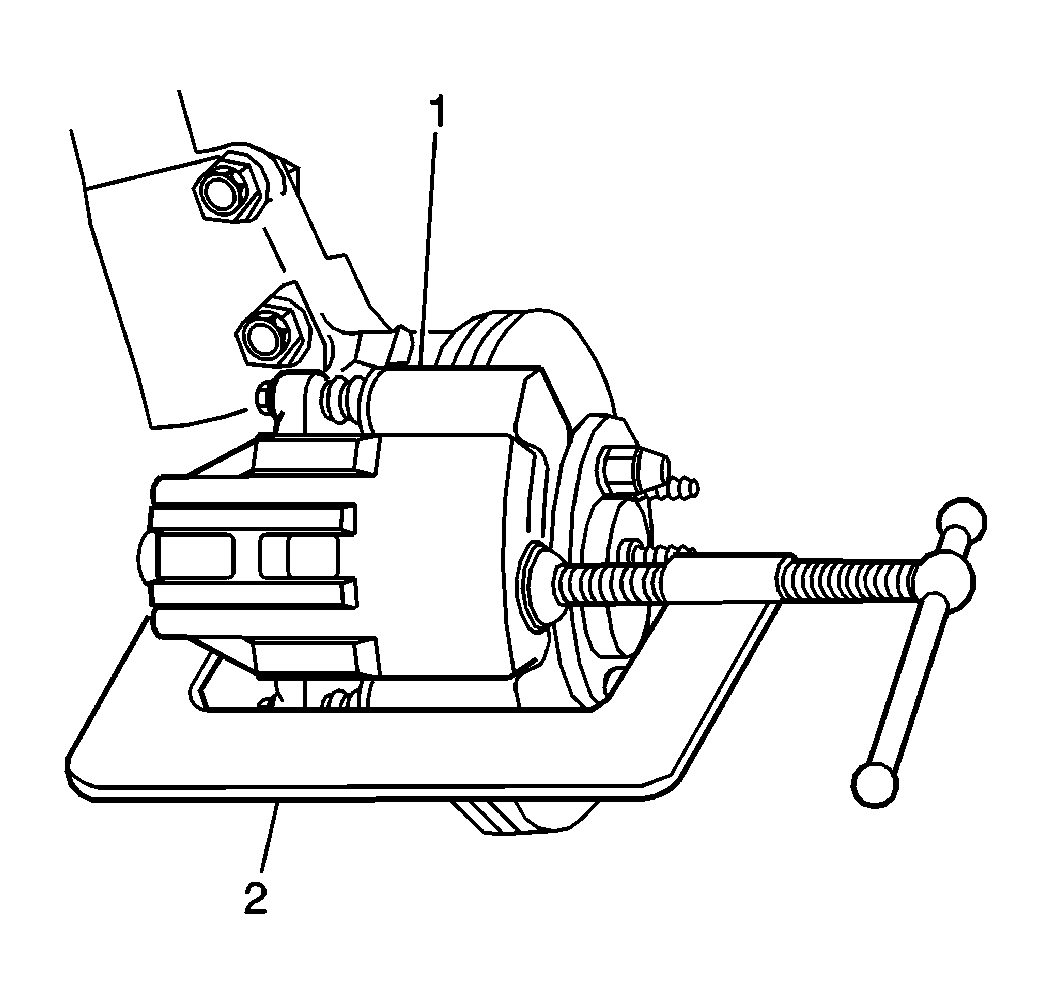
- Install a C-clamp (2) over the top of the brake caliper and against the back of the outboard brake pad.
- Tighten the C-clamp (2) until the brake caliper piston pushes into the brake caliper bore enough to slide the brake caliper (1) off of the rotor.
- Remove the C-clamp from the brake caliper.

- Remove the lower brake caliper bolt.
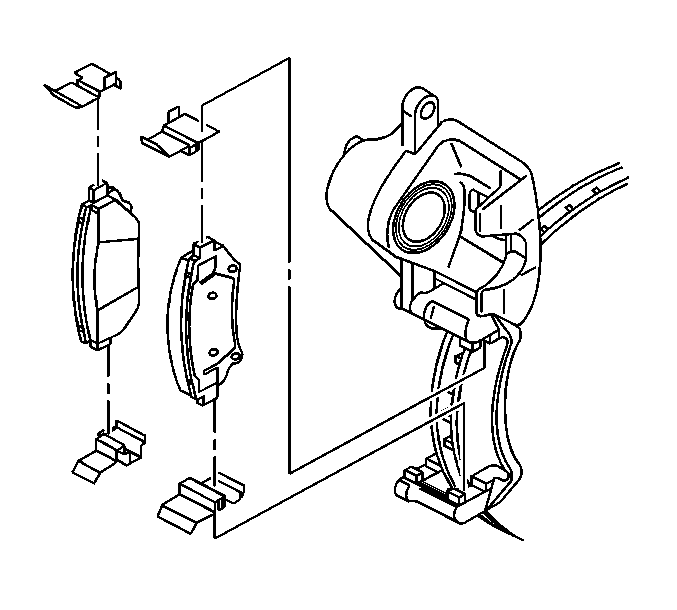
- Rotate the brake caliper upward in order to access the brake pads.
- Remove the brake pads from the brake caliper bracket .
- Remove the brake pad retainers from the brake caliper bracket .
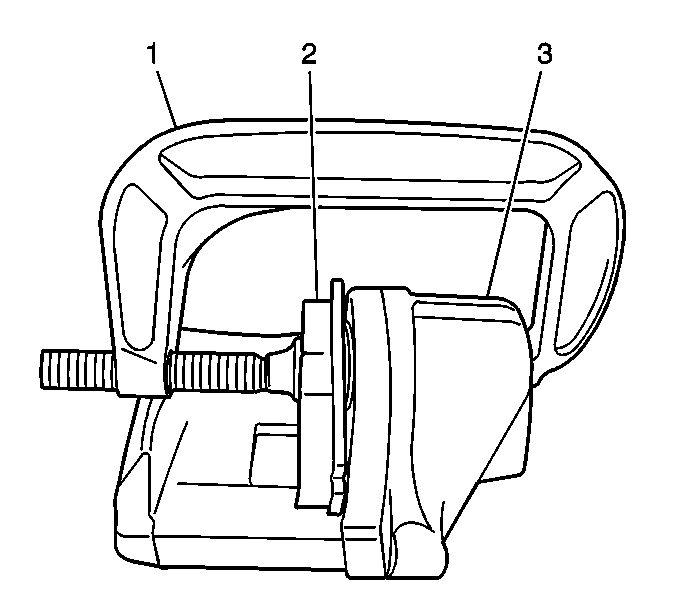
Important: Insert a block of wood or the old brake pad brake between the C-clamp (1) and the brake caliper piston in order to prevent damage to the brake caliper piston and the brake caliper piston boot.
- Install a C-clamp over the brake caliper and against the block of wood or the old brake pad (2).
- Tighten the C-clamp until the brake caliper piston pushes completely into the brake caliper bore.
- Remove the C-clamp from the brake caliper.
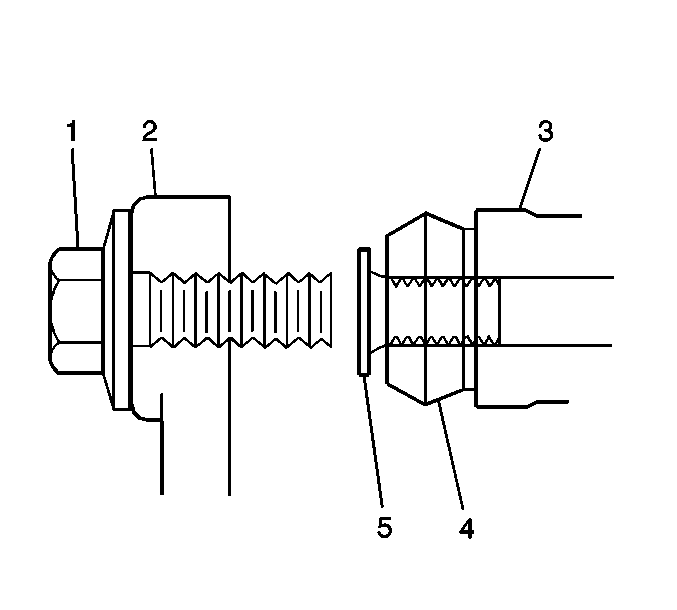
- Inspect the brake caliper bolt boots (4) for the following conditions:
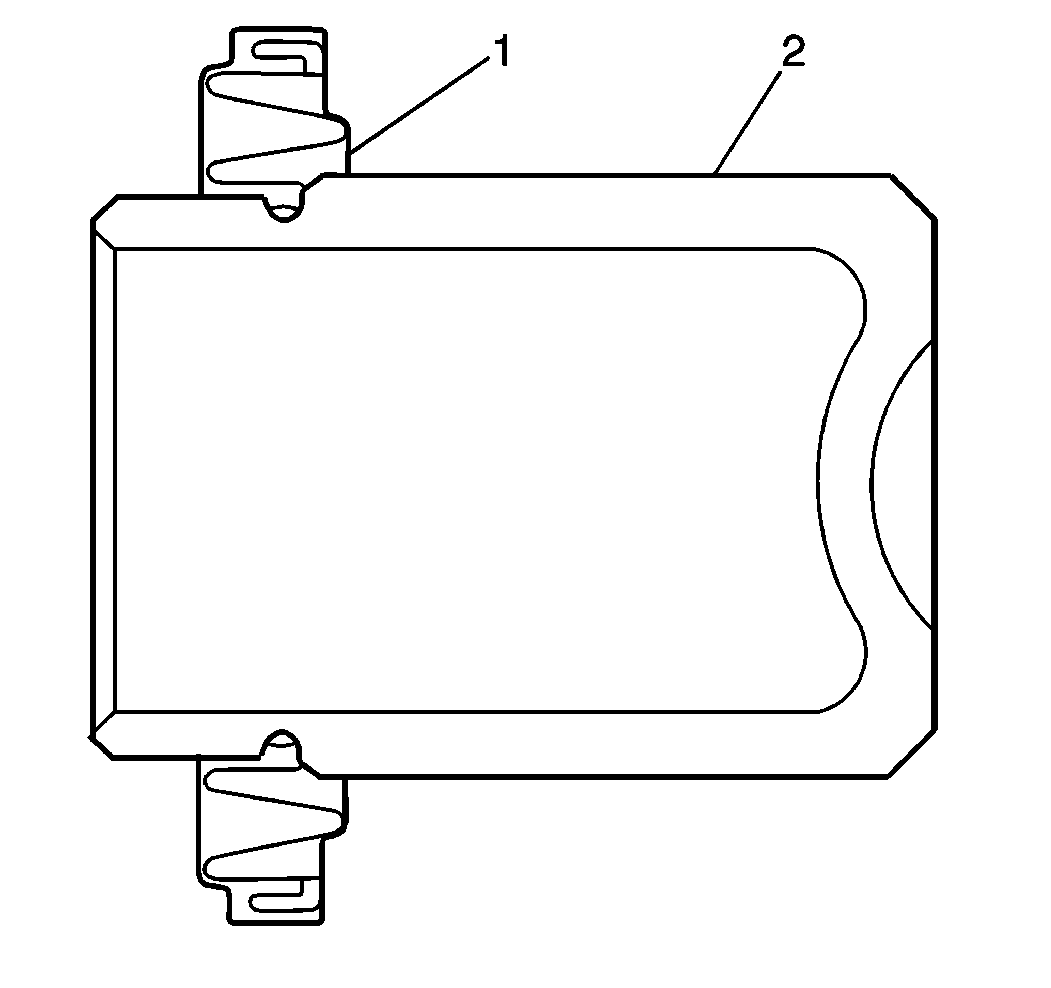
- Inspect the brake caliper piston dust boot (1) for the following conditions:
- Inspect the brake caliper bolts for corrosion or damage. If corrosion is found, use new parts, including bushings, when installing the brake caliper. Do not attempt to polish away corrosion.
Installation Procedure
Important: Use denatured alcohol to clean the outside surface of caliper boot before installing new brake pads.
- If you are installing new brake pads, use a C-clamp in order to compress the piston to the bottom of the caliper bore. Use the old brake pad, a metal plate or a wooden block across the face of the piston in order to protect the piston and the caliper
boot.

- Install the four brake pad retainers to the caliper bracket.
Important: Ensure that the wear sensor is positioned at the leading edge (upward) of the inner pad during forward wheel rotation.
- Install the brake pads over the brake pad retainers and onto the caliper bracket .
- Thoroughly clean and apply Threadlocker GM P/N 12345493 (Canadian P/N 10953488) or equivalent to the threads of the brake caliper pin bolts.
Notice: Use care to avoid damaging pin boot when rotating caliper.
- Pivot the caliper down onto the pads.
Notice: Refer to Fastener Notice in the Preface section.

- Install the lower caliper bolt.
Tighten
Tighten the caliper bolt to 35 N·m (26 lb ft).
- Remove the two wheel nuts securing the rotor to the hub and bearing.
- Install the tire and wheel. Refer to
Tire and Wheel Removal and Installation
.
- Lower the vehicle.
- Pump the brake pedal (3/4 of a full stroke) as many times as necessary to obtain a firm brake pedal.
- Fill the master cylinder to the proper level. Refer to
Master Cylinder Reservoir Filling
.
- Burnish the pads and the rotors. Refer to
Brake Pad and Rotor Burnishing
.








